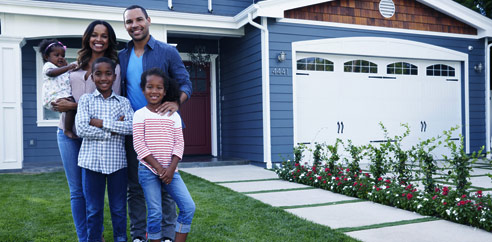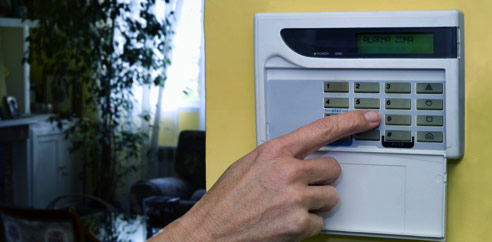10 Tips to Help Prevent Home Break-Ins
Take a look at recent police incident reports. Including ones right in your town. They are featured on the Police and Fire Logs posted in many places including Patch.com. You’ll see many reports of home break-ins.
In just one week, police in Easton, MA received calls about an individual who broke into a garage and stole a wallet from a vehicle as well as another thief who broke into a house and stole a video game system. In late August, three separate break-ins were reported, two occurred in the afternoon and the third in the early evening.
According to the Federal Bureau of Investigation in 2010 there were approximately 2,159,878 burglaries – 60.5% of those burglaries involved forcible entry. Residential property burglaries accounted for 73.9% of all offenses.
About 70% of thieves are primarily opportunists. Those who break in on impulse after seeing an easy way in. Thier intent is to steal low-risk items such as cash or jewelry, according to an article published by CBS News. The most commonly stolen items include laptop computers, DVDs, electronics, jewelry, watches, tools, televisions, sports equipment and credit cards.
While not every break-in is avoidable, there are ways to minimize break-ins or deter thieves from entering your home including installing and using a home security system.
1. Fake the Appearance Someone Is Always Home: More break-ins occur during the day, when burglars assume people are at work. If a burglar thinks someone is at home, it lessens the chance he’ll attempt to break in. Leave lights on. Keep a radio or television on as well. Don’t allow newspaper or mail delivery to build up; if you’re away on vacation, have the post office hold your mail or arrange for a neighbor, friend or family member to pick it up daily from your home.
2. Invest in Locks: Install heavy-duty, key-in deadbolts on all exterior doors; pushbutton locks are too easy for burglars to open. Change locks immediately whenever you move into a new residence, or if your keys are lost or stolen.
3. Invest in Doors: Forced entry most often occurs when a burglar kicks in a door. Install solid core or metal doors on entrances. One of the weakest points on a door is the lock strike plate; install a heavy-duty strike plate.
4. Secure Windows: Keep windows locked. An open window is enticing to burglars. Most windows have latches, not locks; invest in a secondary locking device. Install security pins on vertical windows. Security pins are steel pins that lock a window in a closed or a ventilating position. For horizontal sliding windows, insert a wooden dowel into the track. Keep windows open no more than four to six inches for ventilation. The window opening should not be large enough to allow someone to reach in with his hand and unlock a nearby door or remove the window lock.
5. Secure Sliding Glass Doors: Invest in special locks for sliding glass doors; these doors are usually only secured with latches. Metal track blockers and other locks are available, or you can insert a wooden dowel into the door track as a cheaper alternative. Install double key locks in all glass doors to prevent a burglar from breaking the glass and unlocking the door by reaching through, but keep the key in an accessible place in case of a fire.
6. Hide Valuables: Keep valuables out of sight. Place curtains or shades on all windows, including on basement and garage windows. Store bicycles, grills, lawn mowers and other yard equipment out of sight. Lock sheds and garages. Keep garage doors closed as much as possible, even when you’re home; giving a burglar a peek inside your garage is enticing enough to encourage him to come back later. Move expensive items, such as guns, electronics and artwork, out of the way of windows so people walking or driving by can’t see them. When purchasing appliances, electronics or other expensive items, don’t leave the box in plain view outside beside the trash can; this tells a burglar you have something expensive inside, and maybe other expensive items as well.
7. Set Your Alarm: Many people don’t set the alarm on their home security systems because they forget or it seems like a hassle. But setting the alarm is one top way to deter a thief. If forgetfulness is the issue, set something beside the alarm that you take with you every day, such as keys, as a reminder to set the alarm on your way out the door.
8. Install Cameras: The front and back doors are the most likely points of entry. Install a video surveillance system with cameras at these points to deter thieves, as well as to give you a view of an intruder. Some cameras connect to your computer for monitoring, and they can also connect to your smartphone.
9. Increase Lighting: Place exterior lights out of reach so burglars can’t access them easily and unscrew the bulbs. Install motion sensors on exterior lights. Use a light timer inside the home to keep lights on when it gets dark, even if you aren’t home.
10. Decrease Landscaping: Use minimal landscaping, or keep trees and shrubs well- trimmed. Remove tree limbs near windows that could allow someone to gain access to the home. Plant thorny bushes and shrubs under windows to deter thieves from breaking in. Choose picket or chain-link fencing; privacy fencing provides too much cover for a burglar as he’s breaking into your home.


















